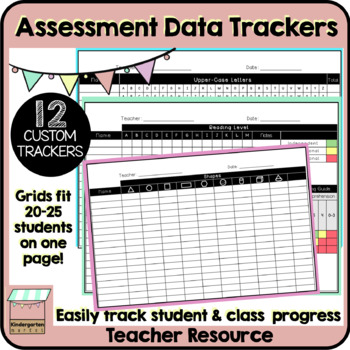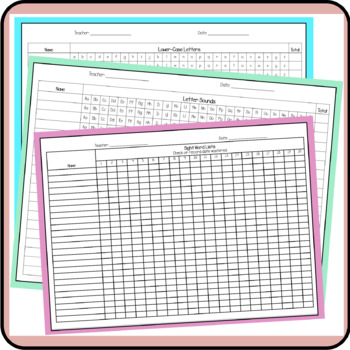Student Assessment Data Tracking Forms | Teacher Data Collection Binder Notebook
- PDF
What educators are saying
Description
Looking for a simple way to document student data? With this complete set of assessment data trackers you can easily highlight the grids to track your student's and class progress.
These sheets come in two sets to fit a class size of 20 on one page, or up to 25 students on one page. A blank grid is included for you to track any additional assessments you may have. You can also choose from pages that have a stylish black heading, or use the ink saving pages included.
Included:
Letter recognition upper-case
Letter recognition lower-case
Letter sound recognition
Mastered sight word lists
Reading Levels
Number recognition
Counting by one's
Counting by ten's
Counting Objects
Shape recognition
Sorting
Blank Grid
Thank you for your interest in this resource! Follow my store for more great products and check out my webpage for activities, and teacher-author tips and tricks!
You may also like:
Beginning of Year Kindergarten Report Card | Progress Assessment
High Frequency Word Lists | Take Home Sight Word Practice Flashcards Included





